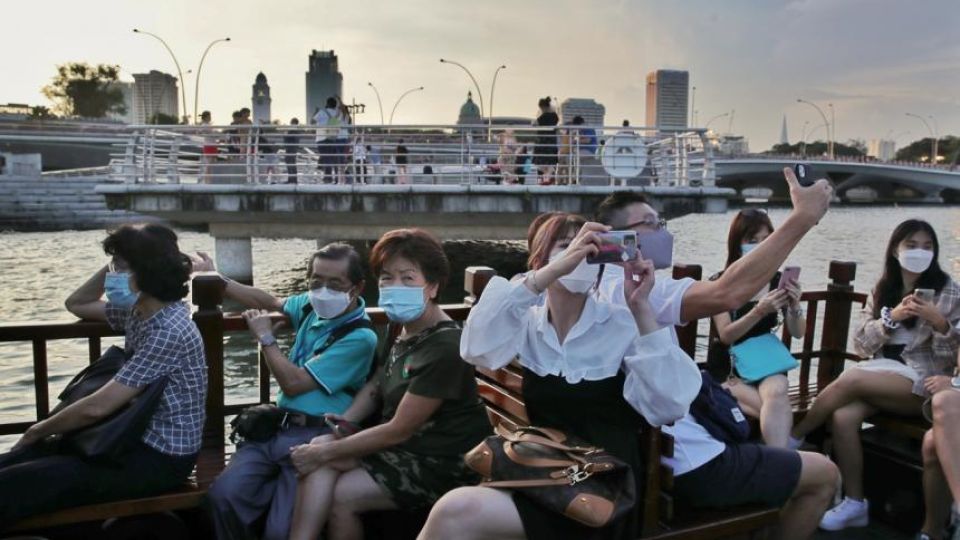May 25, 2022
SINGAPORE – The number of visitors to Singapore in the first four months of the year has exceeded figures for the whole of 2021, mainly due to a surge in arrivals in April after Singapore dropped most of its Covid-19 restrictions.
A total of 540,430 people visited Singapore from January to April, with more than half of them – 294,300 – arriving last month, according to numbers from the Singapore Tourism Board (STB).
In comparison, Singapore welcomed just 329,990 visitors for all 12 months in 2021.
April’s figure is also the highest since February 2020, although it remains a fraction of the 1.6 million visitors logged in pre-pandemic April 2019.
The rise in visitors comes as STB told The Straits Times it is now ramping up its marketing efforts and focusing its resources on countries and regions that are already open, such as South-east Asia, India, Australia, Europe, the United States and most recently, South Korea.
China and Japan have been left out for now as these major markets remain largely closed.
The Government has set aside close to half a billion dollars to support the tourism sector over the next few years. This covers marketing efforts and refreshing existing attractions, for example.
“We have maintained a well-balanced portfolio with a mix of new and long-haul markets,” said Mr Chang Chee Pey, assistant chief executive of STB’s marketing group, noting that the board kept up efforts even when borders were closed in the past two years.
This strategy will support the country’s tourism recovery and ensure Singapore continues to attract visitors, he added. STB is also closely monitoring other countries’ border measures so that it can increase marketing efforts when needed.
The tourism industry had been growing year on year at a rate of between 3.3 per cent and 7.7 per cent between 2016 and 2019 until Covid-19 derailed its trajectory and caused tourism arrivals to plummet to unprecedented lows in 2020.
But while the tourism sector is recovering, analysts said the continued closure of China – Singapore’s top market pre-pandemic – remains a cause of worry.
A full recovery is unlikely without Chinese tourists, who made up nearly 20 per cent of 2019’s total arrivals, they added.
In April, there were only 5,000 visitors from China, compared with 302,100 in the same month in 2019.
In the past two years, STB has rolled out initiatives such as taxi tours of Singapore on US live-streaming platform Twitch, reality television series The Apprentice: One Championship Edition and animated series Chhota Beem, which takes Indian audiences on a virtual adventure in Singapore.
It has also worked with British influencers to spread awareness of Singapore’s food scene and sustainable experiences, while working with Australian media house Urban List to launch a dedicated platform to attract tourists. That platform has reached more than one million people since its launch.
Mr Christopher Khoo, managing director of tourism consultancy MasterConsult Services, said the reopening of borders in April is already making an impact, with changes in where the most numbers of visitors are from.
March saw a surge in arrivals from India, which opened its borders earlier. In April, this was surpassed by Indonesia, traditionally a stronger market than India based on pre-pandemic patterns.
Mr Khoo said STB is taking the right approach in capitalising on countries that are already open.
“STB is also keeping a watchful eye on our traditionally strong markets that haven’t opened up yet. We will look like superheroes for the next few years because the base in 2020 and 2021 was practically zero,” he said.
He added that the next two years will be challenging for the tourism sector, with a poorer global economic outlook and diminished disposable income. He said countries will have to stay attractive if they do not want to fall by the wayside.
CIMB economist Song Seng Wun said Singapore should be well placed to attract tourists looking to travel for the first time since the pandemic as it has acquired a reputation for the ease and safety of travel.
Large-scale events, appealing to people of varied interests, can quickly restore the industry, he said. Events such as the Formula One Singapore Grand Prix and e-sports tournament Dota 2’s The International provide the country with an additional selling point.
“It gives us an edge over competitors, like Hong Kong, which are not yet open and allows us to reach a new audience. I foresee the next few months to be a straight line upwards. The problem now is manpower, and businesses will need to hire in a lean market,” Mr Song said.


